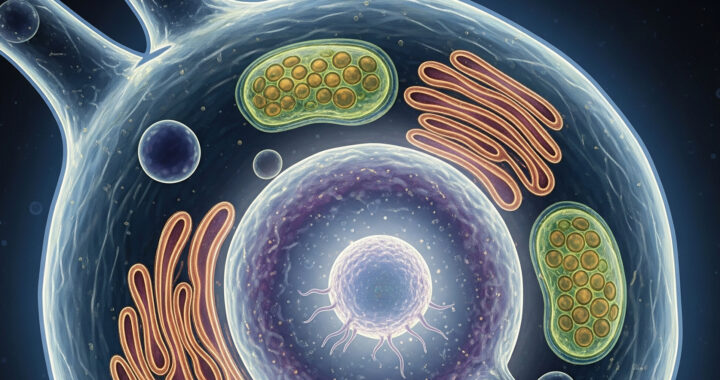Takuro Nakayama, a cell biologist at the University of Tsukuba in Japan, along with his research team from both Japan and Canada, discovered a microscopic organism that blurs the distinction between living and nonliving systems. The archaeon, named Sukunaarchaeum mirabile, possesses characteristics of both cells and viruses, creating a biological paradox. The particular preprint paper detailing this new species was published on 2 May 2025 on the bioRxiv server.
Between Cell and Virus: Newly Discovered Archaea Named Sukunaarchaeum Mirabile Reveals a Rogue Form of Life
Overview of Newly Identified Microorganism
Researchers discovered the organism unexpectedly in 2024 during an analysis of the microbiome of a marine dinoflagellate called Citharistes regius. Specifically, while sequencing genetic data, they noticed DNA fragments that did not correspond to known organisms. A Closer inspection revealed a completely new archaeon with unusual genomic traits. This serendipitous finding highlighted how much unexplored microbial diversity exists in the natural world.
What makes Sukunaarchaeum mirabile remarkable is its exceptionally small genome. It has the smallest archaeal genome discovered to date at about 238,000 base pairs. It is worth noting that the previously smallest archaeal genome measured around 490,000 base pairs. This extreme reduction strips away most metabolic genes and leaves the newly identified but still perplexing microorganism heavily dependent on a host for both survival and reproduction.
Despite this dependency, the archaeon retains critical features of cellular life. It encodes ribosomal machinery, allowing it to synthesize proteins, and it can replicate independently. These traits separate it from viruses, which entirely lack ribosomes. However, because it cannot perform its own metabolism, the microorganism must borrow energy and raw materials from its host, much like a viral parasite. The Sukunaarchaeum mirabile exists between life and non-life.
Specific Characteristics of Sukunaarchaeum Mirabile
• Smallest Archaeal Genome: This microorganism has about 283,000 base pairs. This is far smaller than typical archaea. Such extreme reduction strips away most metabolic genes while still keeping essential ones.
• Extreme Dependency: It cannot perform its own metabolism. This means it must borrow almost everything from its host to survive. This makes it functionally like a parasite but still more complex than a virus.
• Notable Ribosome Retention: Moreover, unlike viruses, this organism encodes ribosomes and messenger RNA machinery, allowing it to make proteins. This is a key trait of cellular life. It blurs the virus–cell divide.
Key Implications and Important Takeaways
This dual nature of Sukunaarchaeum mirabile positions it in an ambiguous zone between life and nonlife. Remember that it has enough cellular machinery to be considered a living organism in one sense, but it lacks the autonomy considered fundamental to life. This extreme dependence is seen in viruses. Scientists have described it as a gray zone organism, one that challenges traditional and well-established biological definitions and categories.
Researchers have also found evidence that Sukunaarchaeum is not an isolated curiosity. Using global oceanic genomic databases, including the Tara Oceans project, scientists discovered related DNA sequences in various marine environments. This suggests the existence of an entire lineage of similar organisms hidden within the microbial dark matter of the Earth. Note that this description is associated with uncultivated and poorly understood microbial diversity.
Its name also carries a symbolic meaning. “Sukunaarchaeum” references the Japanese dwarf deity Sukuna-biko-na, reflecting its small size, while “mirabile” means marvelous. This naming choice underscores both the wonder of the discovery and its profound implications. Scientists emphasize that the organism forces a reconsideration of how life originated and evolved.
Future research directions are aimed at culturing and observing Sukunaarchaeum mirabile directly in laboratory conditions. Nakayama and his team hope to visualize its structure, document how it interacts with hosts, and learn how such a simplified genome sustains itself. This could uncover novel insights about the evolution of life, microbial diversity, and the minimum requirements for life to exist on Earth or potentially elsewhere in the universe.
FURTHER READING AND REFERENCE
- Harada, R., Nishimura, Y., Nomura, M., Yabuki, A., Shiba, K., Inaba, K., Inagaki, Y., and Nakayama, T. 2025. A Cellular Entity Retaining Only Its Replicative Core: Hidden Archaeal Lineage With An Ultra-Reduced Genome. Cold Spring Harbor Laboratory. DOI: 1101/2025.05.02.651781
